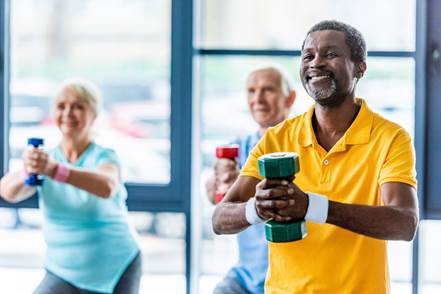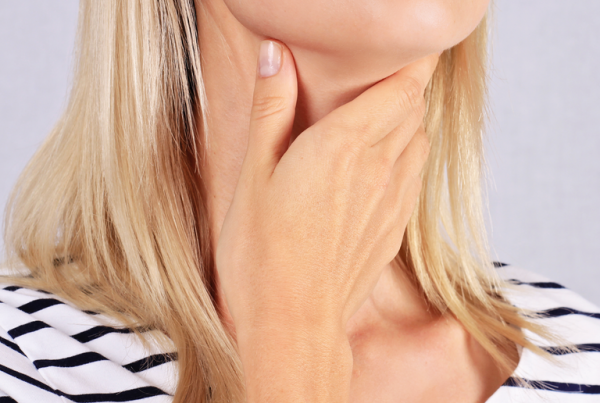Osteoporosis is a disease that leads to brittle and weak bones. And contrary to popular belief, it doesn’t just pose a threat to women. Millions of men around the world are at increased risk of declining bone health as they age. Nicole Jennings explains what you need to know and do about this disease on World Osteoporosis Day, 20th October 2022.
Osteoporosis is a growing issue among men
Too many people believe osteoporosis affects only women, as a consequence of declining estrogen levels from menopause onwards.
Yet, out of the 8·9 million fractures caused by osteoporosis globally each year, around 20–25% of the cases occur in men. Osteoporosis fractures are predicted to increase in the coming decades. This is due to population aging, together with some major fractures (e.g., hips) forecasted to rise more in men than in women. So yes, male osteoporosis is a growing yet under-recognized public health concern.
For years, osteoporosis hasn’t been properly treated in men, despite a third of all hip fractures worldwide befalling them.
The high incidence of hip and vertebral fractures in men, as well as the impact it has on their quality of life, highlights that osteoporosis is not only a woman’s disease and that it should be screened for and treated the same as for women.

It is something which is routinely checked when women reach menopause, since the drop in estrogen levels results in bone loss. However, all men over the age of 50 should be screened.
The rise in the number of men with declining bone health is a result of many factors
According to the International Osteoporosis Foundation, aging populations and urbanization are primarily responsible for the rise in osteoporosis cases.
Since 1950, ten times the number of older men have developed this bone health disease. By 2050, an estimated 900 million men are likely to suffer from it.
Age-related bone loss and other factors
There are two types of osteoporosis. First, “primary osteoporosis”, which is typically caused by age-related bone loss, and “secondary osteoporosis”. Secondary osteoporosis could be related to the following;
- Vitamin D deficiency
- Inadequate calcium intake
- Overactive thyroid
- Low levels of testosterone
- Use of medication that alters bone metabolism, like glucocorticoid medications
- Hormonal treatments for prostate cancer
Unhealthy lifestyle factors also play a role. These include a poor diet, alcohol abuse, smoking and not getting enough exercise. Family history, low body mass index (BMI), or smaller bone structure also play a part in osteoporosis risk.
5 Ways to reduce the risk of osteoporosis
To limit your risk of osteoporosis, you need to take the following action.
1. Consume foods that are rich in calcium and vitamin D
If you’re not sure of your dietary intake, ask your doctor or pharmacist about using supplements. Daily sun exposure is another healthy way of getting enough vitamin D.
2. Do 30-40 minutes of weight-bearing exercises
Exercises can include weight training, hiking, stair-climbing, walking, and jogging. They can be done at least three to four times a week.

Photo by Alora Griffiths on Unsplash
3. Limit alcohol consumption
You should drink no more than two units per day of alcohol if you want to help maintain bone health.
4. Quit smoking
Do this immediately, as smoking increases your risk of a fragility fracture and hip fracture by 29% and 68% respectively.
5. Go for a screening
This allows you to assess your bone health risk. If you fall into a high-risk category, take your medication as prescribed.
Living with osteoporosis
While osteoporosis cannot be completely reversed, men (and women) can incorporate healthy habits as part of their daily routine to improve bone health,
Medications like alendronate, which belong to a class of non-hormonal medicines known as bisphosphonates can help to rebuild bone and reduce the risk of fractures.
It’s equally important to avoid activities that involve twisting your spine or bending forward from the waist that could lead to fractures. The risk of falling should also be decreased, especially at home or wherever you spend most of your time.
Ways you can make your home safer include
1. Install handrails on both sides of the stairs, and in bathrooms near the toilet, in the bath, and shower.
2. Good lighting is a must at the top and bottom of the stairs, as well as in long passageways.
3. Keep all walkways tidy and clear of clutter.
4. Install non-slip tiles and/or fix carpets to the floor.
5. Replacing broken or uneven tiles and paving inside and outside the house.
6. Store frequently used items in an easy-to-reach place.
Want to know more?
Osteoporosis is a silent and harsh disease that can severely impact your bone health. An expert explains how you can reduce your risk by boosting your bone health.
Who is the author?

Nicole Jennings
Nicole Jennings has approximately ten years’ worth of experience in the public relations and media communication industry, of which six years have been spent in a management position.
She is currently the Spokesperson and Corporate Communication Manager for a leading pharmaceutical firm, Pharma Dynamics. Her key responsibilities include overall media and corporate communication strategy, internal communication strategy, and below-the-line product marketing.
She has several years’ worth of agency experience across industries working with brands such as Turkish Airlines, Facebook, Cipla, JSE-listed Metrofile Holdings Limited, Energy Partners and 24.com.



![women [longevity live]](https://longevitylive.com/wp-content/uploads/2020/01/photo-of-women-walking-down-the-street-1116984-100x100.jpg)










